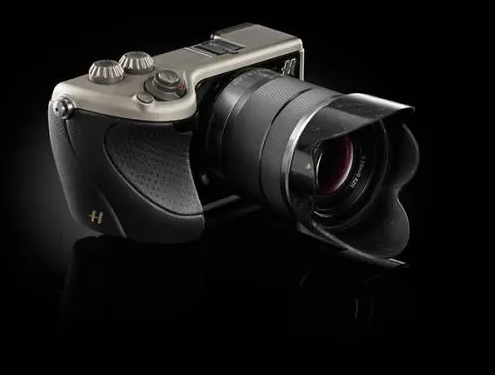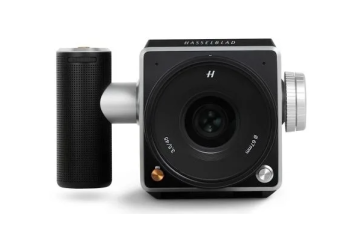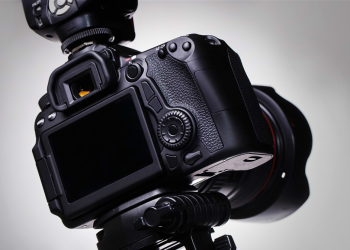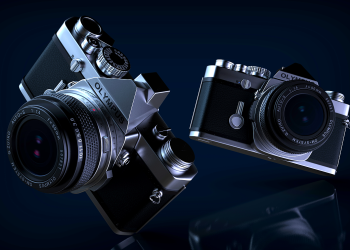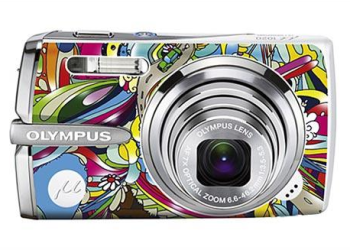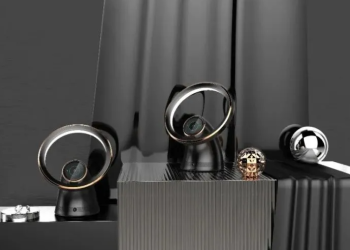Introduction
In the world of photography, camera lenses play a crucial role in capturing stunning images. Understanding the different types of lenses and their uses is essential for photographers of all levels. In this comprehensive guide, we’ll explore everything you need to know about camera lenses, from types and features to choosing the right lens for your photography needs.
Understanding Camera Lenses
Definition of Camera Lenses: Camera lenses are optical devices that focus light onto a camera sensor, forming an image. They come in various types and designs, each offering unique characteristics and capabilities.
Importance in Photography: Camera lenses are the eyes of your camera, determining factors such as field of view, depth of field, and image quality. Choosing the right lens can make a significant difference in the outcome of your photographs.
Types of Camera Lenses
Prime Lenses: Prime lenses have a fixed focal length, meaning they do not zoom. They often offer superior image quality and wider apertures, making them ideal for low-light photography and achieving shallow depth of field effects.
Zoom Lenses: Zoom lenses have a variable focal length, allowing you to adjust the magnification of your subject. They offer versatility and convenience, making them suitable for a wide range of photography genres.
Wide-angle Lenses: Wide-angle lenses have a shorter focal length, capturing a broader field of view than standard lenses. They are popular for landscape, architecture, and street photography, allowing you to include more of the scene in your frame.
Telephoto Lenses: Telephoto lenses have a longer focal length, allowing you to magnify distant subjects. They are commonly used for wildlife, sports, and portrait photography, enabling you to capture detail and isolate subjects from their surroundings.
Macro Lenses: Macro lenses are designed for close-up photography, allowing you to capture small subjects at a 1:1 magnification ratio. They are ideal for capturing intricate details in subjects like flowers, insects, and textures.
Fisheye Lenses: Fisheye lenses have an extremely wide-angle of view, often exceeding 180 degrees. They produce distorted, spherical images, creating unique and creative effects in photography and videography.
Key Features of Camera Lenses
Focal Length: The focal length of a lens determines its angle of view and magnification. Shorter focal lengths capture wider scenes, while longer focal lengths magnify distant subjects.
Aperture: The aperture of a lens controls the amount of light that enters the camera. A wider aperture (smaller f-number) allows more light and creates a shallower depth of field, while a narrower aperture (larger f-number) reduces light and increases depth of field.
Image Stabilization: Image stabilization helps reduce camera shake and blur in handheld shots. Some lenses feature optical stabilization, while others rely on in-body stabilization in the camera.
Autofocus System: The autofocus system of a lens determines how quickly and accurately it can focus on subjects. Advanced autofocus systems use phase-detection or hybrid autofocus technology for fast and precise focusing.
Choosing the Right Lens for Your Photography
Considerations for Different Genres: Different photography genres have unique requirements for lenses. Consider factors such as focal length, aperture, and image stabilization when choosing a lens for landscape, portrait, wildlife, or macro photography.
Budget Constraints: Lenses vary widely in price, with factors like brand, focal length, and aperture affecting cost. Determine your budget and prioritize features that are essential for your photography needs.
Compatibility with Camera Body: Ensure that the lens you choose is compatible with your camera body in terms of mount type and sensor size. Check compatibility specifications provided by the lens manufacturer or consult with a knowledgeable salesperson.
Best Practices for Using Camera Lenses
Lens Care and Maintenance: Take care of your lenses by keeping them clean and protected from dust, moisture, and scratches. Use a lens cleaning kit and store lenses in a protective case when not in use.
Experimenting with Different Lenses: Experiment with different types of lenses to expand your creative possibilities and discover new perspectives. Try using prime lenses for shallow depth of field effects or telephoto lenses for compressing perspective.
Understanding Lens Distortion and Aberrations: Learn to recognize and correct common lens distortions and aberrations, such as chromatic aberration, vignetting, and barrel distortion, using post-processing software or lens correction profiles.
Popular Lens Brands and Models
Canon Lenses: Canon offers a wide range of lenses for its DSLR and mirrorless camera systems, including versatile zoom lenses, high-quality prime lenses, and specialized lenses for macro and telephoto photography.
Nikon Lenses: Nikon produces a variety of lenses for its DSLR and mirrorless cameras, known for their sharpness, build quality, and optical performance. Popular options include standard zooms, fast primes, and telephoto zooms.
Sony Lenses: Sony’s E-mount lenses are designed for its mirrorless Alpha series cameras, offering a diverse selection of prime and zoom lenses with advanced features like optical stabilization and fast autofocus.
Sigma Lenses: Sigma manufactures a range of lenses compatible with various camera mounts, including Canon, Nikon, Sony, and more. Their Art series lenses are highly regarded for their optical performance and build quality.
Tamron Lenses: Tamron produces affordable yet high-quality lenses for DSLR and mirrorless camera systems, offering options like all-in-one zooms, wide-angle lenses, and telephoto zooms with image stabilization.
Comparison with Third-party Lenses
Pros and Cons: Third-party lenses offer advantages like affordability, unique features, and compatibility with multiple camera systems. However, they may have drawbacks such as inconsistent quality control and limited warranty coverage.
Quality and Performance: Many third-party lenses offer comparable performance to OEM (original equipment manufacturer) lenses, with factors like optical design, build quality, and image stabilization contributing to overall quality and performance.
Lens Accessories
Lens Filters: Lens filters like UV filters, polarizers, and neutral density filters can enhance your photographs by reducing glare, enhancing colors, and controlling exposure. Invest in high-quality filters and learn how to use them effectively.
Lens Hoods: Lens hoods help prevent lens flare and protect the front element of your lens from damage. Use a lens hood whenever possible, especially when shooting in bright sunlight or against strong light sources.
Lens Caps: Lens caps are essential for protecting the front and rear elements of your lens when not in use. Always use lens caps to prevent dust, dirt, and scratches from affecting image quality.
Lens Rental Services
Benefits: Lens rental services offer photographers the opportunity to try out different lenses without committing to a purchase. They are also useful for special occasions or specific photography projects that require specialized equipment.
Considerations: When renting lenses, consider factors like rental rates, insurance coverage, rental periods, and the condition of the equipment. Choose a reputable rental service with a wide selection of lenses and reliable customer support.
Future Trends in Lens Technology
Advances in Lens Design: Expect continued advances in lens design, including improvements in optical performance, autofocus speed, and image stabilization technology. Manufacturers will likely focus on creating lenses that offer superior sharpness, clarity, and color rendition.
Integration with Camera Systems: As camera technology evolves, lenses will become increasingly integrated with camera systems, offering seamless compatibility and communication between lenses and camera bodies. Look for features like lens-specific customization options and enhanced autofocus tracking.
Emerging Technologies: Emerging technologies like computational photography and AI-driven image processing will play a significant role in the future of lens technology. Expect innovations that improve lens performance and expand creative possibilities for photographers.
Conclusion
In conclusion, camera lenses are essential tools for photographers, allowing them to capture unique perspectives and express their creativity. By understanding the different types of lenses, key features, and best practices for usage, photographers can elevate their photography to new heights. Whether you’re a beginner exploring the world of photography or a seasoned professional looking to expand your toolkit, investing in quality lenses is essential for achieving stunning results.

FAQs After The Conclusion
- Do I need multiple lenses for photography?
- While a single versatile lens can cover a wide range of photography situations, having multiple lenses allows you to explore different perspectives and creative possibilities.
- What is the difference between prime and zoom lenses?
- Prime lenses have a fixed focal length and do not zoom, while zoom lenses have a variable focal length, allowing you to adjust the magnification of your subject.
- What is the importance of lens aperture?
- The aperture of a lens controls the amount of light that enters the camera and affects factors like depth of field and exposure. A wider aperture (smaller f-number) allows more light and creates a shallower depth of field.
- Can I use DSLR lenses on a mirrorless camera?
- With the use of lens adapters, many DSLR lenses can be mounted on mirrorless cameras. However, some functionality like autofocus may be limited depending on the adapter and lens combination.
- How do I choose the right lens for portrait photography?
- For portrait photography, consider lenses with focal lengths between 50mm and 85mm, as they offer flattering perspective and shallow depth of field for smooth background blur.
- What is image stabilization, and why is it important in lenses?
- Image stabilization helps reduce camera shake and blur in handheld shots, allowing you to capture sharper images, especially in low-light conditions or when using telephoto lenses.
- Are third-party lenses as good as OEM (original equipment manufacturer) lenses?
- Many third-party lenses offer comparable performance to OEM lenses, with factors like optical design, build quality, and image stabilization contributing to overall quality and performance.
- How do I clean and maintain my camera lenses?
- To clean and maintain your camera lenses, use a lens cleaning kit with a soft brush, microfiber cloth, and lens cleaning solution. Avoid touching the front and rear elements of the lens with your fingers and store lenses in a protective case when not in use.


